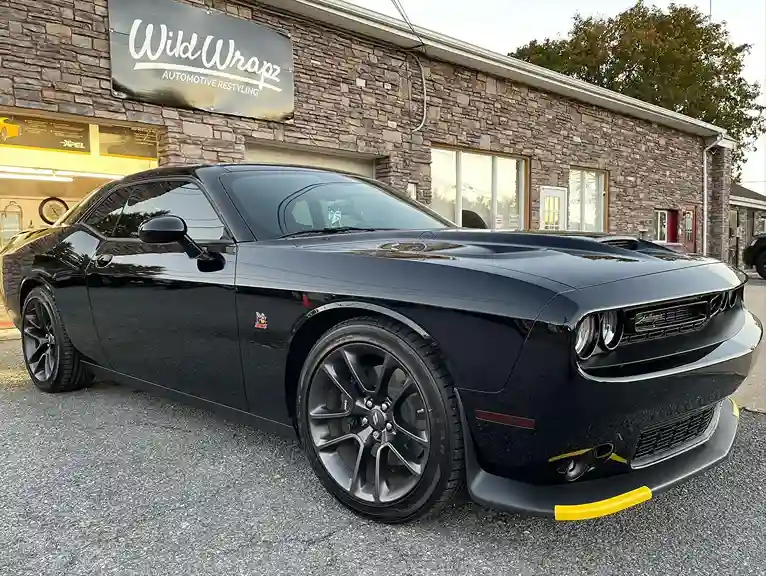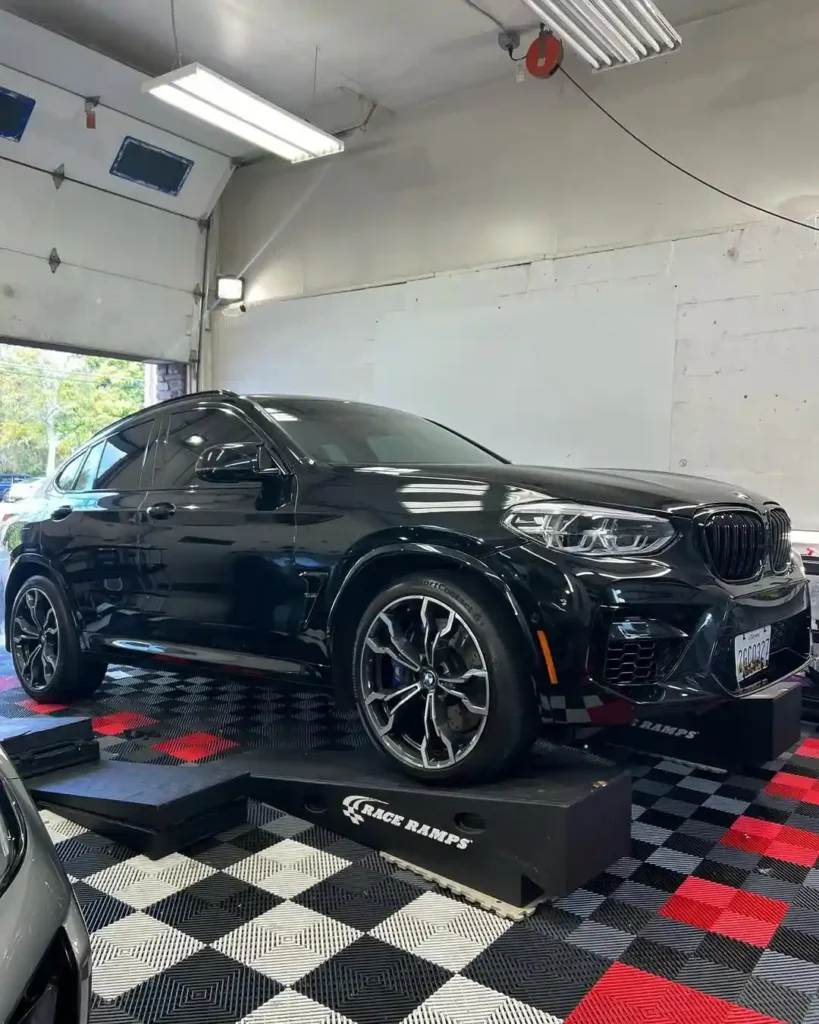The automotive industry is relentlessly revolutionizing every aspect of vehicle care, including how we remove paint protection films (PPF) in 2025. Paint Protection Film remains one of the most effective methods for protecting a vehicle’s paint against rock chips, UV rays, and other environmental harm, but there comes a time when it needs to be removed. PPF removal has become safer, more efficient, and precise than ever, whether it is for replacing old film, repairing a damaged panel, or reconditioning paint before resale.
In this article, we endeavor to provide additional insight into the most recent breakthroughs in PPF removal tools and add valuable pointers on aftercare, hints and mistakes that should be avoided, and step-by-step, thorough instructions for professional detailers and vehicle owners in achieving seamless film removal in 2025.
Why Remove PPF?
The PPF is not designed to last. It can yellow, fade, or start to lift at the edges over time. Reasons such as exposure to the sun, harsh temperatures, low-quality film, or shoddy installation can speed up the need for removal. More and more vehicle owners are choosing to remove old PPF when:
- The film has yellowed, cracked, or lost its clarity.
- They wish to upgrade to a more advanced or aesthetic PPF.
- They’re correcting an installation that included bubbling or edge lifting.
- They’re preparing for new paint correction or ceramic coating.
- They’re getting ready to sell the vehicle and want the paint to look flawless.
Timely removal helps protect the underlying paintwork from adhesive damage or prolonged exposure to ageing materials.
Understanding the Evolution of PPF Removal
In the previous years, the process of PPF removal involved the use of heat guns or hair dryers in conjunction with aggressive solvents and plastic razor blades, which put significant strain on the paintwork of delicate repainted panels. Thanks to advancements within the industry, the process has become more refined as of 2025.
The methods currently prioritize surface protection, technician comfort, and safety materials. In conjunction with non-dangerous adhesive removers, digitally controlled steam devices, eco-friendly scrubbers, and microfiber-compatible scrapers, modern PPF removal techniques have greatly improved in precision, cleanliness, and environmental sustainability. With these advancements, safe film removal is now regarded as a standard procedure in vehicle protection services, rather than an unpleasant task.

What are the new developments in PPF removal for 2025?
1. Heat-Controlled Steam Systems
As of now, steam is the most popular method for removing PPF safely. Modern equipment, such as the VaporEase 5.0, applies and maintains precise temperatures, ensuring the safe weakening of bonds without threatening the paint’s condition. Steam systems prevent the clear coat from lifting, bubbling, or discolouring, which was an issue with traditional heat guns.
2. Eco-Friendly Adhesive Removers
Today’s detailing shops find great value in low-VOC biodegradable adhesive removers. They are very effective in getting rid of glue but gentle on paint, trim, and the environment. Products like Citrus Lift and Adhesive Clean Green remove adhesives at a molecular level without using offensive odours or surface-damaging solvents.
3. Next-Gen Scraper Alternatives
Microfibre scrapers that bend to the shape of body panels, preventing gouges and swirl marks, are replacing tools like plastic razor blades. Other tools have indications such as LED lights that flash green when optimal surface peel temperature is reached, representing new technology that helps avoid costly mistakes.
4. Integrated Removal Kits
Companies have started providing wiper systems that come with steam, scraper tools, and chemical removers all in one, and these tools can be conveniently stored in a box. These kits frame the entire system, improving the workflow of the technician, particularly within multi-car garages and detailing studios.
Step-by-Step Process of PPF Removal
1: Inspection and Surface Prep
Each removal starts with a careful examination to describe the film and decide what areas are damaged. The vehicle is washed with pH-neutral soap to eliminate any contaminants, road dirt, or wax that may disrupt adhesive failure.
2: Controlled Heating
The technician uses a digital steamer to gradually heat specific regions of the film. This approach carefully reduces the adhesive bond without damaging or overheating the clear coat and guarantees safe removal.
3: Film Peeling
The technician removes the film carefully at a shallow angle, usually at angles between thirty and forty-five degrees. This is done slowly to avoid tearing the adhesive and pulling paint edges, as well as other damage to aftermarket panels.
4: Adhesive Cleanup
After taking the film off, it’s common for some glue residue to still be present. A biodegradable adhesive remover is applied and scrubbed off with microfibre-safe scraper pads. In consideration of the film’s age and brand, this process may take several attempts.
5: Final Surface Cleaning
To clean the panel, either an alcohol-based surface prep spray or a special paint remover is used. If necessary, a machine polishes the surface at an abrasive level and buffs it to restore its shine. Reapplying protection to the panel is now the next step.
Mistakes to Avoid When Removing PPF
Tools Every Detailer Should Use in 2025
- Steam Systems: HeatLift Pro, VaporEase 5.0
- Adhesive Removers: Citrus Lift, AdhesiClean Green, WrapGo Zero Residue
- Scraper Tools: FlexEdge Microfibre Scrapers, WrapEdge SoftGrip with LED sensors
- Polishing Machines: Dual-action orbital polisher, foam finishing pads
- Safety Accessories: Thermal gloves, filtered face masks, and heat-resistant aprons
Investing in these professional tools not only increases quality but also boosts customer trust and reduces the risk of error.
1. Using Open Flame or Direct Heat Guns
Hot spots caused by these tools can peel unevenly, as well as blisters forming beneath the clear coat. Steam is a much safer and more effective option.
2. Peeling Too Quickly
As one executes large pulls in a hurry, there is a real danger of unevenly ripping adhesive or causing paint to lift. If approached slowly and systematically, the results will always be better.
3. Skipping Adhesive Removal
Residual glue will interfere with new installations of PPF or PPF coatings. Always ensure the complete breakdown or neutralization of adhesive residues.
4. Not Testing for Repainted Panels
Certain regions may have their clear coats resprayed or applied more thinly. Remember to conduct a patch test prior to full removal to prevent the loss of delicate paint.
5. Poor Ventilation
Use ventilation fans alongside personal protective equipment while working with solvents in enclosed areas to mitigate health hazards.
Post-Removal Care and Maintenance
Once the PPF is removed, proper aftercare is crucial to restore and maintain the vehicle’s finish.
- Inspect the paint under direct lighting for hidden defects, oxidation, or paint swelling.
- Polish light imperfections with a fine-grade polish and soft pad.
- Decontaminate the surface using clay or fallout removers if adhesive was left for long periods.
- Seal the paint with wax, synthetic sealant, or ceramic coating depending on the client’s preference.
- Avoid car washes and direct sun exposure for at least 72 hours post-treatment.
This ensures the exposed paint is preserved in its best condition, extending longevity and aesthetics until the next protection phase.

Why Choose WildWrapz for PPF Removal?
At WildWrapz, we take meticulous care in the installation as well as the de-installation of paint protection films (PPF). Our certified specialists use the most advanced instruments and professional-grade solvents and adhere to industry safety standards while executing PPF removal techniques. We tailor each project to the specific vehicle’s surface, existing films, and desired results.
We offer:
- Complete inspection and consultation
- Eco-friendly adhesive removal methods
- No clear coat damage or surface etching
- Polishing and paint prep options post-removal
- Custom solutions for reapplication (PPF, vinyl wraps, or ceramic coating)
With WildWrapz, your car isn’t just protected; it’s respected every step of the way.
Final Thoughts: Efficient, Safe, and Smarter PPF Removal
In 2025, taking off PPF is a simple procedure. With the right tools and the proper technique from trusted brands like WildWrapz, what once was tedious is now effortless. From DIYers to luxury car owners, safe film removal is important in preserving a vehicle’s paintwork and preparing it for a new layer of protection.
Modern tools are to be trusted. Avoid taking shortcuts. Professionals hired. Choose WildWrapz.
It is important to remove the protection in the correct manner, while the chosen professional should set guidance on how to install it properly.
